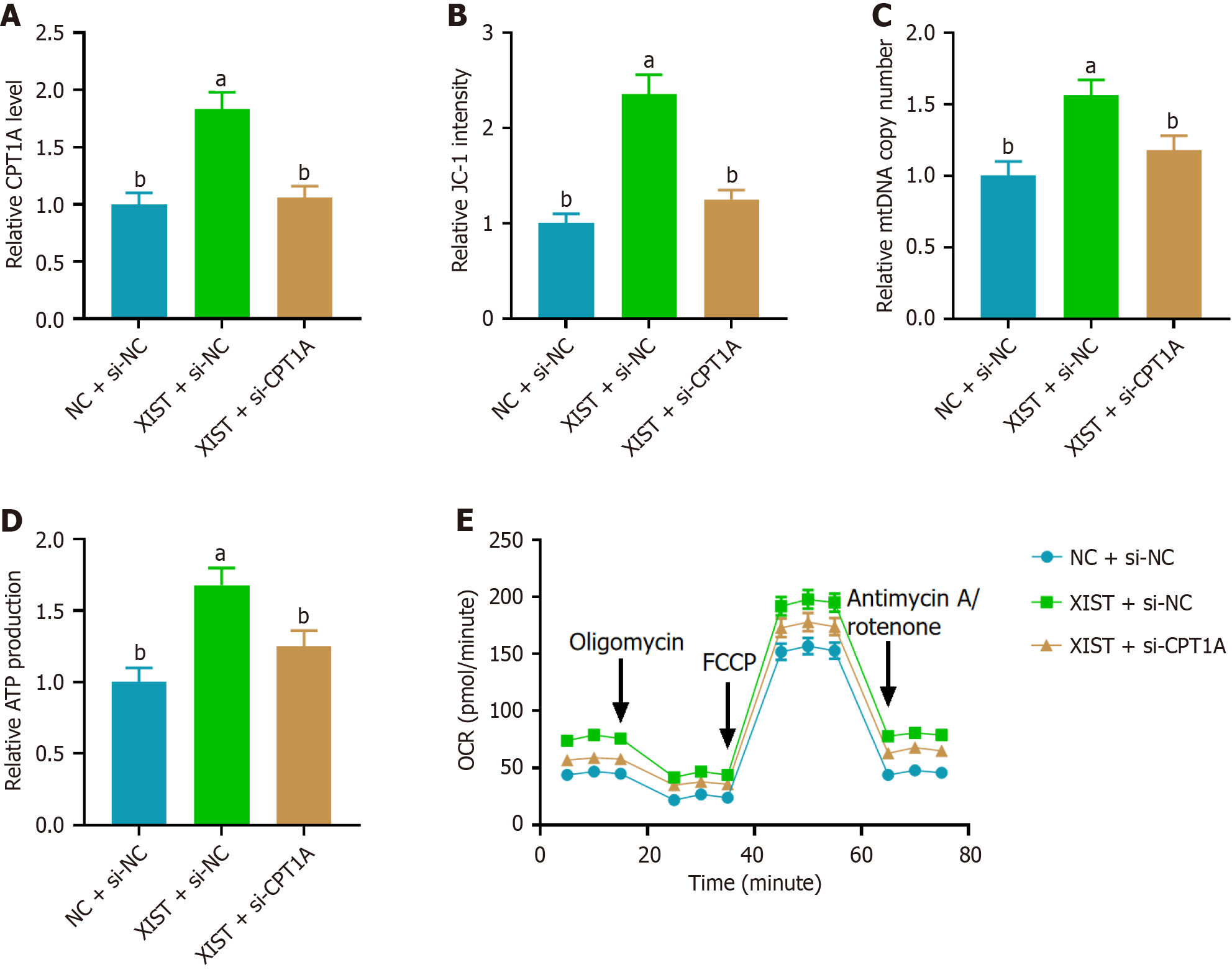Copyright
©The Author(s) 2025.
World J Stem Cells. Jul 26, 2025; 17(7): 101929
Published online Jul 26, 2025. doi: 10.4252/wjsc.v17.i7.101929
Published online Jul 26, 2025. doi: 10.4252/wjsc.v17.i7.101929
Figure 4 Carnitine palmitoyl transferase 1A knockdown reversed the effects of X inactive-specific transcript overexpression on mitochondrial oxidative phosphorylation in neural stem cells.
A: Relative carnitine palmitoyl transferase 1A (CPT1A) mRNA levels determined by real-time quantitative PCR in neural stem cells with X inactive-specific transcript (XIST) overexpression, showing upregulation of CPT1A and reversal by si-CPT1A; B: Mitochondrial membrane potential assessed by the JC-1 assay, indicating increased mitochondrial membrane potential with XIST overexpression and reversal by si-CPT1A; C: Relative mitochondrial DNA copy number measured by PCR, showing an increase with XIST overexpression and reversal by si-CPT1A; D: Relative ATP production in neural stem cells, demonstrating that XIST overexpression enhances ATP production, with reversal by si-CPT1A; E: Oxygen consumption rate result indicated that XIST overexpression enhanced mitochondrial oxidative phosphorylation, with reversal by si-CPT1A. Data are presented as mean ± SD. aP < 0.01, bP < 0.001. XIST: X inactive-specific transcript; NC: Negative control; CPT1A: Carnitine palmitoyl transferase 1A; mtDNA: Mitochondrial DNA; OCR: Oxygen consumption rate; FCCP: Carbonyl cyanide 4-(trifluoromethoxy)phenylhydrazone.
- Citation: Zeng SX, Ye JT, Huang SH, Liu RX. X inactive-specific transcript regulates mitochondrial function and neuronal differentiation of stem cells via IGF2BP2/CPT1A axis in models of spinal cord injury. World J Stem Cells 2025; 17(7): 101929
- URL: https://www.wjgnet.com/1948-0210/full/v17/i7/101929.htm
- DOI: https://dx.doi.org/10.4252/wjsc.v17.i7.101929









